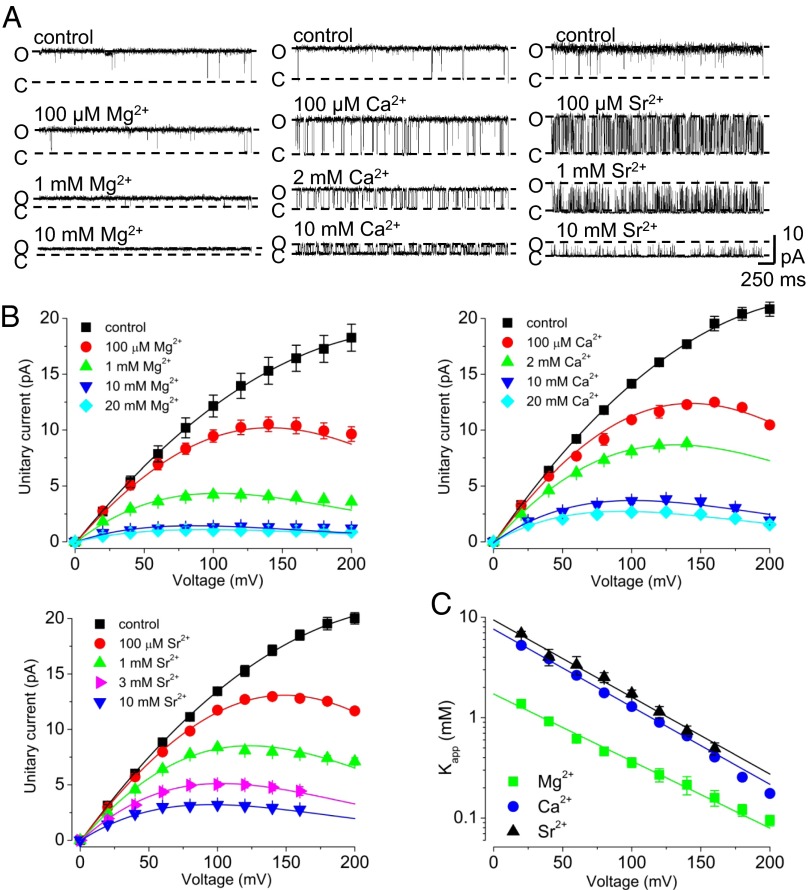Fig. 2.
Rapid blockade of MthK channels by cytoplasmic divalent cations. (A) Representative currents at 120 mV with the indicated concentrations of divalent cation. In these experiments and subsequent experiments, channels are activated using 100 μM Cd2+, and control indicates recordings and results obtained without the addition of Mg2+, Ca2+, or Sr2+. (B) Unitary current amplitude vs. voltage over a range of [Mg2+], [Ca2+], and [Sr2+] as indicated. Smooth curves are drawn for display only. (C) Kapp(V) vs. voltage for experiments with Mg2+, Ca2+, and Sr2+. Fractional current (relative to amplitude without added divalent) was measured over a range of depolarized voltages and fitted with Hill equations to estimate Kapp(V). Kapp(V) vs. voltage relations values were fit with an equilibrium block model, Kapp(V) = Kapp(0)exp(−zδVF/RT), to estimate Kapp(0) and zδ. The similar zδ-values of ∼0.45 e0 for [Mg2+]i, [Ca2+]i, and [Sr2+]i suggest that the fast blocking site for these ions is at the same location in the conduction pathway, whereas the estimated Kapp(0) values are consistent with a lower apparent affinity of Sr2+ and Ca2+ compared with Mg2+.

